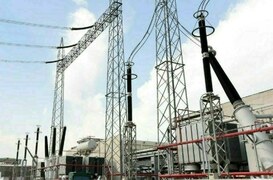Aptma Seeks Transparency on Electricity Tariff Hurdles
The All Pakistan Textile Mills Association (Aptma) has urged the government to disclose the factors preventing the elimination of peak hour electricity tariffs for the industrial sector.
In a communication to Prime Minister Shehbaz Sharif, Aptma Secretary General Shahid Sattar mentioned that, despite advancements, the existing electricity tariff, ranging from 10 to 11 cents/kWh, surpasses the regionally competitive rate of 9 cents/kWh.
He highlighted that rival economies provide electricity at rates between 5 and 9 cents/kWh, thereby placing Pakistan’s energy-intensive textile industry at a competitive disadvantage. The elevated cost of energy is impeding export competitiveness and manufacturing expansion.
Potential Solutions and Benefits
Sattar suggested that a further decrease in industrial power tariffs could be realized by doing away with the Time of Use (ToU) power tariff structure for industrial consumers. He stated this action would be revenue-neutral, as industry is anticipated to consume approximately 32% more electricity during current peak hours, based on Nepra data. This increase would compensate for revenue losses resulting from the higher ToU tariff.
According to Aptma’s estimates, this modification would lower the effective weighted average tariff for industrial consumers from Rs29.48/kWh (10.57 cents/kWh) to Rs28.36/kWh (10.16 cents/kWh), marking a reduction of Rs1.12/kWh. Heightened electricity consumption would optimize grid utilization and minimize stranded capacity, potentially diminishing the average power purchase price by an additional Rs0.14/kWh. This decrease could be transmitted to consumers through Quarterly Tariff Adjustments (QTA).
Outdated Mechanism
Aptma contended that the ToU structure represents an obsolete mechanism, initially implemented when Pakistan encountered severe power shortages and sought to discourage peak-hour consumption. The association noted that, with excess generation capacity presently and stranded capacity contributing to elevated tariffs, the continuous implementation of ToU pricing proves counterproductive.
Aptma underscored the necessity of substituting the ToU structure with a consistent tariff at the off-peak rate, to encourage maximum power utilization, enhance grid efficiency, reduce per-unit costs, and bolster industrial competitiveness.
The association appealed to the government to abolish the ToU structure for industrial consumers and introduce a uniform AS-II tariff predicated on the current off-peak rate.
Power Division’s Perspective
In a recent engagement with the Power Division, Aptma reported that its representatives engaged with senior officials on April 18, 2025, to deliberate on the matter. During the discussion, Power Division officials underscored the prevailing obstacles to eliminating the peak-hour tariff, citing system constraints, demand variations, and fuel cost dynamics as pivotal elements.
The Power Division assured Aptma that the analysis shared, accompanied by comprehensive data on real-time system demand and fuel expenses, would be furnished to the Association.
Aptma expressed anticipation in receiving this information promptly, to thoroughly assess it and formulate a viable proposal to curtail industrial energy expenses while augmenting demand on the national grid, ultimately fostering broader economic advancement.



Comments (0)
No comments yet. Be the first to comment!
Leave a Comment